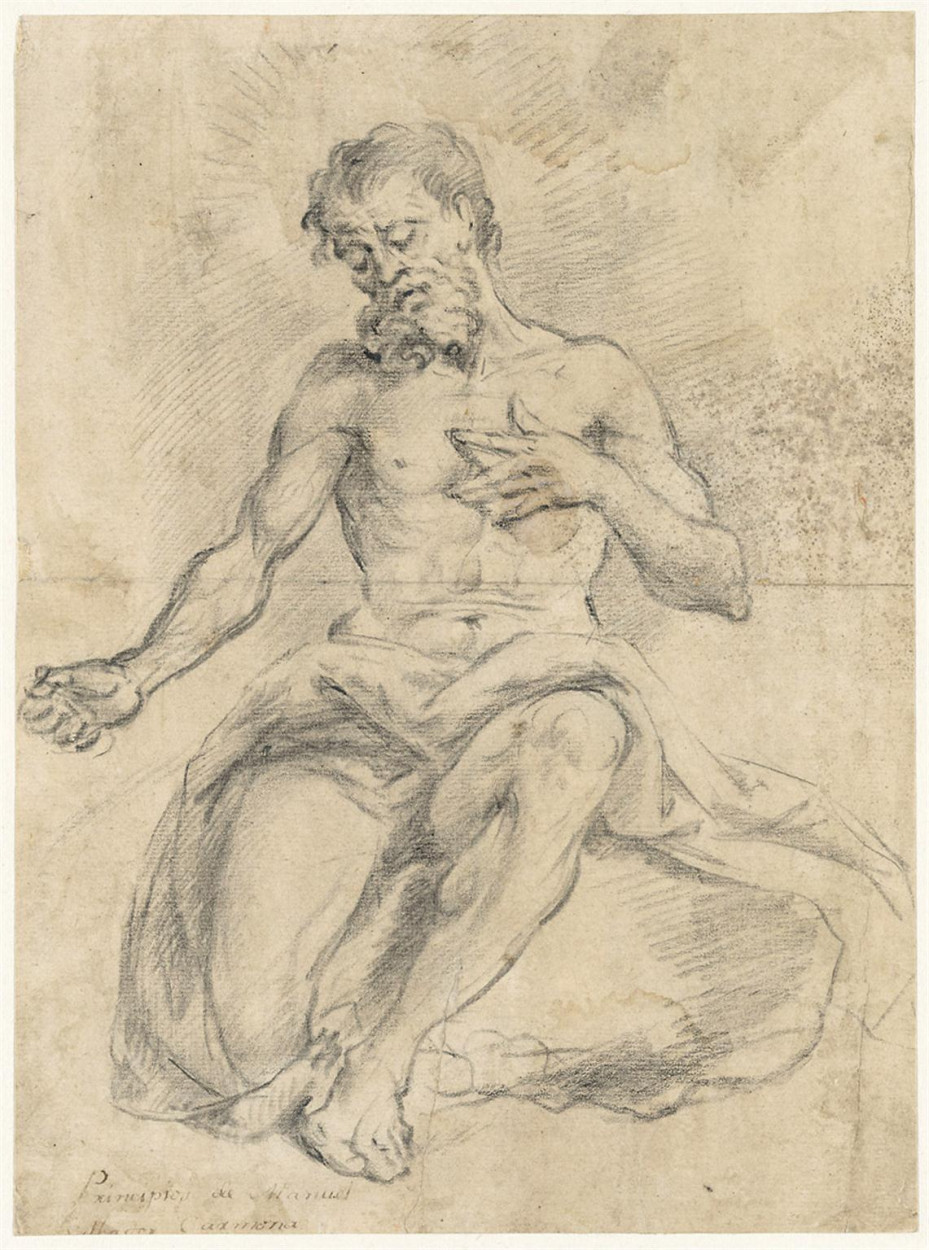Manuel Salvador Carmona, zugeschrieben
Christus, Hl. Hieronymus oder Hiob(?), 18./19. Jahrhundert
Famous engraver Manuel Salvador Carmona began his studies under his father, until, in 1752, a month after the founding of the Real Academia de Bellas Artes de San Fernando in Madrid, he was enabled to go to Paris for ten years as one of the institution's first scholarship holders. In Paris, Salvador Carmona studied under Nicolas-Gabriel Dupuis (1698-1771), and soon achieved great success.[1] He became a member of the Académie Française and engraver to the king at the French court. Upon his return to Madrid he was first appointed to the Académico de mérito, and ultimately became director of the Academy's graphic department.
In the catalogue of the 1996 Hamburg exhibition, there were not yet any works that could be compared to this drawing as a means of documenting the old attribution to the young Salvador Carmona. August Mayer supported the attribution based on the “emphatically stressed outlines.”[2] Madrid's Biblioteca Nacional preserves a whole series of the artist's academic studies,[3], some of which possess characteristics similar to those of this early drawing.[4]Nevertheless, there has yet to be an in-depth study of his drawings, especially with regard to their function in preparing his prints.
Jens Hoffmann-Samland
1. Gallego 1990, 268, Carrete 1989.
2. Stubbe (dir.) 1966, 12.
3. The attribution of the sheets to Salvador Carmona was made by Ángel María de Barcia Pavón (1854-1927) and has been confirmed by Pérez Sánchez.
4. See the hands in the sheet Study of Hands, DIB/15/72/16, the conception of the arm on the sheet Report of a Study of an Arm, DIB/15/72/25, the legs and foot of the Seated Model, DIB/14/2/28, or the foot on the sheet Model Leaning, DIB/14/2/33.

